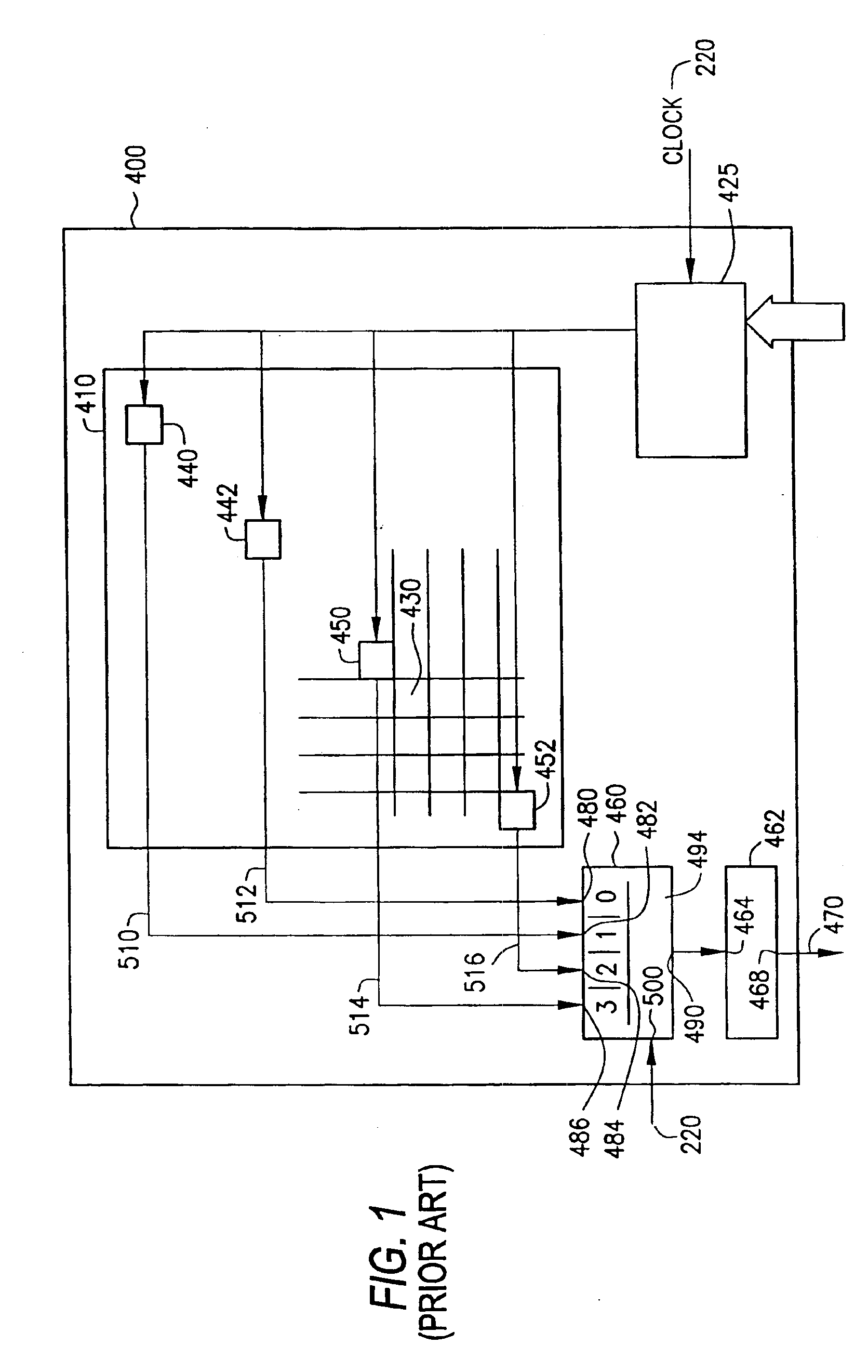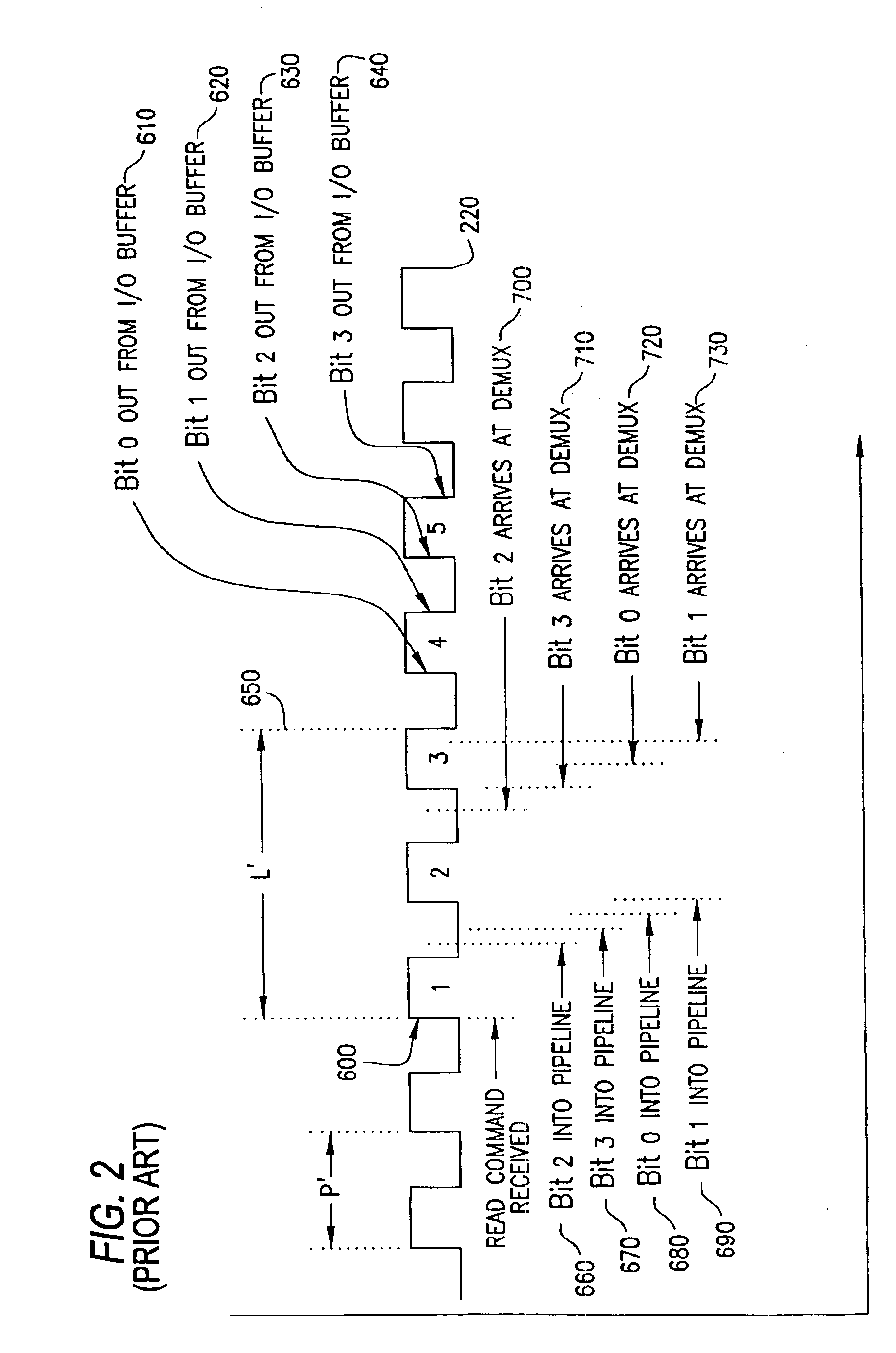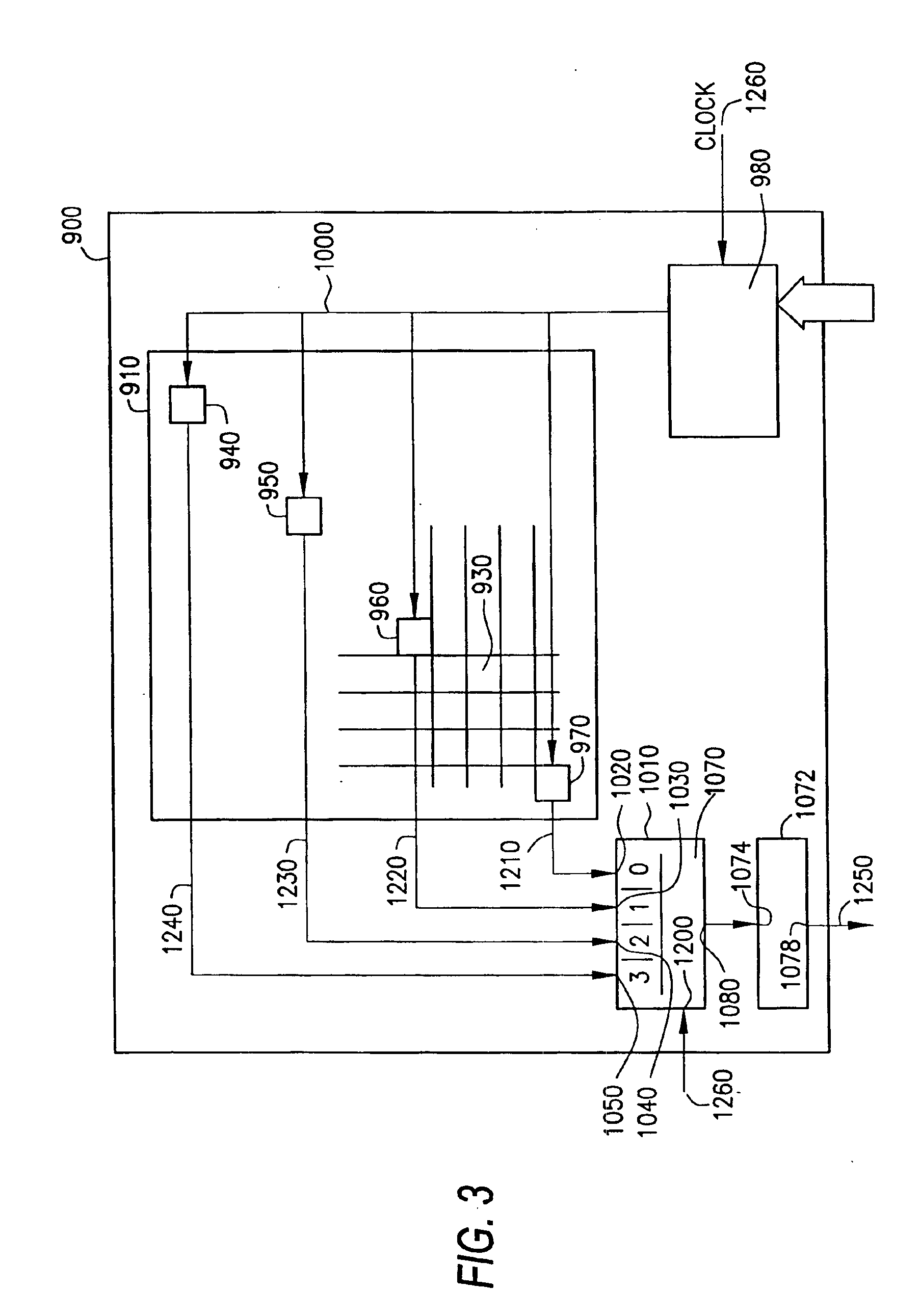System and method for operating a memory array
a memory array and memory technology, applied in the field can solve the problems of limited speed of digital memory devices, value output of buffers that cannot properly reflect the data value stored in memory cells, etc., and achieve the effect of more rapid retrieval of data
- Summary
- Abstract
- Description
- Claims
- Application Information
AI Technical Summary
Benefits of technology
Problems solved by technology
Method used
Image
Examples
Embodiment Construction
The present invention will be described as set forth in the exemplary embodiments illustrated in the figures attached hereto. Other embodiments may be utilized and structural or logical changes may be made without departing from the spirit or scope of the present invention.
FIG. 1 illustrates, in simplified form, a conventional fourth order memory system. In the fourth-order memory architecture, four bits are selected from a single data quadrant (DQ) and routed to an output buffer in response to every read request. After arriving at the output buffer, these bits are output at subsequent rising and falling edges of a clock signal. Accordingly, FIG. 1 shows a memory integrated circuit 400 including a memory array DQ 410 made up of a large number of substantially identical cells 430. Four particular cells are identified as 440 and 442, 450 and 452, respectively.
An address decoder 425 is operatively connected to the array DQ 410 for selecting cells. As noted above, one of skill in the ar...
PUM
 Login to View More
Login to View More Abstract
Description
Claims
Application Information
 Login to View More
Login to View More - R&D
- Intellectual Property
- Life Sciences
- Materials
- Tech Scout
- Unparalleled Data Quality
- Higher Quality Content
- 60% Fewer Hallucinations
Browse by: Latest US Patents, China's latest patents, Technical Efficacy Thesaurus, Application Domain, Technology Topic, Popular Technical Reports.
© 2025 PatSnap. All rights reserved.Legal|Privacy policy|Modern Slavery Act Transparency Statement|Sitemap|About US| Contact US: help@patsnap.com



